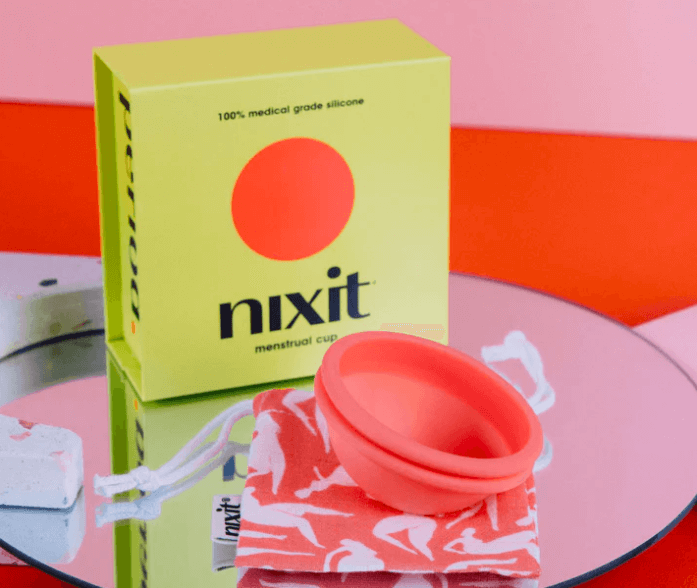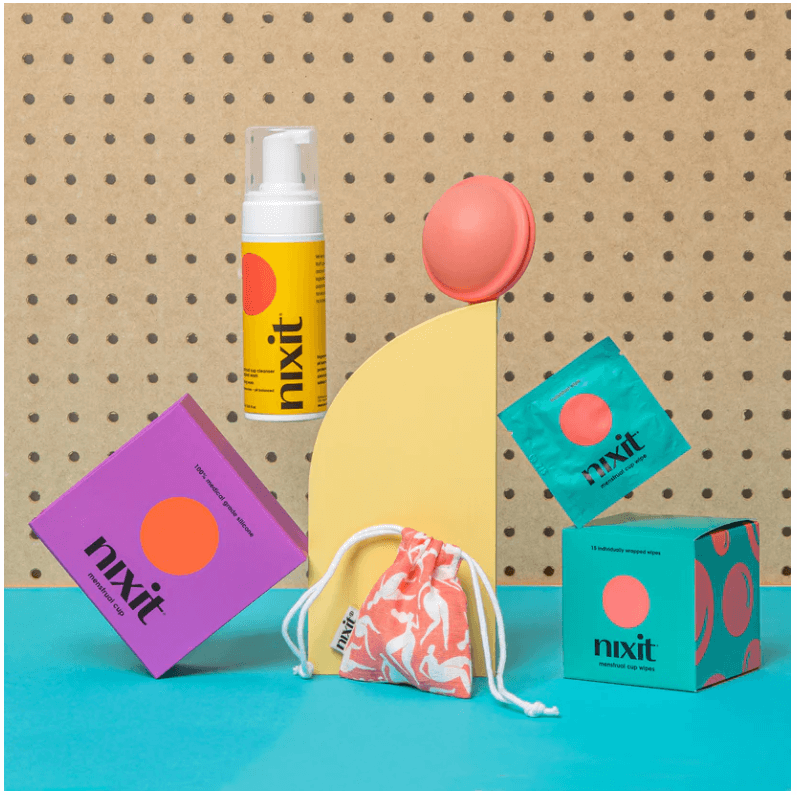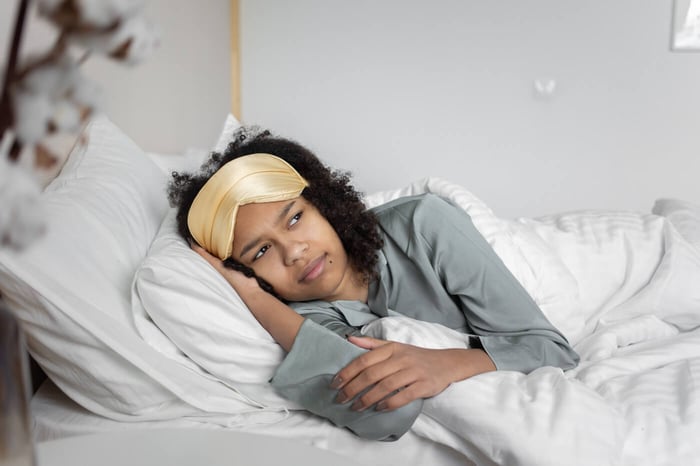Toxic shock syndrome gained notoriety many decades ago (think 80’s!) due to super-absorbent tampons. It had a life-threatening impact, and therefore wasn’t something to be taken lightly.
However, as time went by, improvements were made regarding the use of tampons and their safety.
Now, you might ask: is there still a risk of toxic shock syndrome with tampons?
The short answer to that is yes - with all period care products, there is a risk of TSS - especially if it’s left inside for a long time or if it's a super-absorbent tampon used with a lighter flow. However, the risk is extremely small for menstrual cup users when used as directed and cleaning instructions are followed.
That said, if you’re worried about toxic shock syndrome, there are several steps you can take to minimize your chances of getting it. Also, if you do have toxic shock syndrome, it’s fully treatable if caught early. 🙂
In a nutshell, toxic shock syndrome:
- Happens when certain strains of bacteria infect your body and release toxins into your bloodstream.
- Is caused by staph bacteria (Staphylococcus aureus) in menstrual products.
- Can damage your organs and be life-threatening if left untreated.
Here are 5 common toxic shock syndrome symptoms and ways to prevent it:
5 Symptoms of Toxic Shock Syndrome
1 - High Fever And Other Flu-Like Symptoms
One sign of toxic shock syndrome is a sudden fever with a temperature equal to or higher than 102 ℉ (38.9℃) [1].
Fact: When you reach these temperatures, it most likely means your body is fighting against infection. So, when looking for toxic shock syndrome symptoms, watch out for flu-like symptoms such as [2, 3]:
- Chills
- Muscle aches or pains
- Headache
While there’s a possibility that these symptoms may be attributed to other health conditions, it’s still important to have yourself checked for toxic shock syndrome—especially if you’re wearing a tampon!
2 - Sunburn Or Peeling Skin
Another sign of toxic shock syndrome is sunburn-like rashes showing up on your body [4, 5]. Your skin may also peel - especially on your palms and soles - after 1 to 2 weeks [1, 4].
3 - Your Digestive System Has Gone Haywire
Your digestive system may have also been disrupted by toxic shock syndrome, meaning you’ll experience [3]:
- Nausea
- Vomiting
- Diarrhea
4 - Redness of Throat, Eyes, and Your Vagina
Your mucous membranes may become red and swollen - which may manifest in any of the following [1, 3, 4]:
- Sore throat (pharyngitis)
- Eye redness (conjunctivitis)
- Red appearance of your vagina
5 - Low Blood Pressure And Dizziness
You may experience signs of shock because of an insufficient blood supply in your body [6]— leading to:
- Feeling dizzy and faint
- Being disoriented
- Having a feeling of lightheadedness
As we mentioned, while these symptoms might be caused by other health conditions, it’s super important to get in touch with your healthcare provider if experiencing any of them!
In short, treat toxic shock syndrome as a medical emergency [2]. Also, if you have a period product inserted, and you’re showing symptoms and are worried, remove it right away to be safe.
Diagnosis and Treatment of Toxic Shock Syndrome
So what happens when you contact your medical provider? To diagnose toxic shock syndrome, your doctor will run a series of tests. This can include:
- Blood tests
- Urine tests
- Blood cultures
- Tissue cultures
- A lumbar puncture
- A pelvic examination
If your doctor determines you have toxic shock syndrome, you’ll be given antibiotics—usually via an IV [3, 5].
Note: IV fluids will help to stop any damage to your organs, and you’ll likely be prescribed other necessary medicines to control blood pressure.
Remember that the symptoms progress rapidly and prompt treatment is needed to avoid serious complications [3] - so don’t hesitate to get yourself checked out! 🙂
Risk Factors of Toxic Shock Syndrome

(Image source: Pexels)
Normally, staph bacteria are found on the surface of your body and are harmless [5]. But certain conditions - like leaving an inserted product in your vagina for longer than what is recommended - make them grow quickly and produce toxins.
For tampon use, other risk factors consist of [3]:
- Using highly absorbent tampons with a light flow.
- The tampons making tiny cuts in your vagina, opening a passageway for the infection to get into your bloodstream.
However bear in mind, toxic shock syndrome is not only linked to vaginal insertion products - it can also happen when you have an open or surgical wound. Beyond TSS risks, many health advocates have raised concerns about toxic chemicals in period products and their potential long-term health effects.
Other bacteria strains like Streptococcus pyogenes (group A strep) or Clostridium Sordellii can also cause non-menstrual toxic shock syndrome, which also forms part of the Toxic Shock Syndrome incidence rates [7, 8, 9].
Prevention of Menstrual Toxic Shock Syndrome
Based on the advisories of the US FDA, to help prevent toxic shock syndrome in tampon use, you should [10]:
- Practice good hygiene by washing your hands when inserting and removing your tampon.
- Follow the instructions on the tampon’s labels and change it every 4 to 8 hours.
- Use a tampon with the lowest absorbency (depending on your menstrual flow).
Here’s another option - a menstrual cup, or take it a notch higher and get a disc-style menstrual cup. Let’s explore why this is a good choice below!
Toxic Shock Syndrome: Disc-Style Menstrual Cup Versus Tampons
This table shows how disc-style menstrual cups minimize your risks of toxic shock syndrome:
As with any vaginal insertion product, the use of a menstrual cup also carries a risk for toxic shock syndrome but this is low with very few reported cases.
Taking a closer look, a study made in 2019 cited menstrual cups as a safe and acceptable option for period care [11].
In that study, publications regarding menstrual cups (i.e PubMed) were reviewed from the start of the database until May 2019. Only 5 reported cases of menstrual toxic shock syndrome among menstrual cup users were found in the review.
Make the Switch: Let’s nixit
Have a look at nixit, a suction-free, one-size-fits-all, reusable, and BPA-free menstrual disc-style cup.


With the nixit menstrual disc, you get to:
- Experience 12-hour protection as it holds up to 70 ml of flow
- Save on costs as you can reuse it for around 5 years
- Have mess-free period sex as the disc sits and stays in place above your vaginal canal
- Be assured of its safety as it’s FDA-registered and authorized for sale by Health Canada
Here’s a video showing how nixit differs from a typical bell-shaped cup and why it’s even better.
And you can even use nixit lube to make insertion easier!
What else can you do to avoid toxic shock syndrome?
Proper Emptying Times and Cleanliness are Keys to Safety
First, you should empty, wash and reinsert your menstrual disc (or change it if you’ve got a spare) at the recommended intervals, which is up to 12 hours.
Avoid prolonged use too, as this can put you at risk of infection (here’s how to change nixit if you’re in a public toilet. You can also use nixit wipes for cleaning on the go).
Aside from this, keep in mind that cleanliness is a must to prevent toxic shock syndrome [6]. So, here are your must-dos:
- Always ensure your hands are clean for insertion and removal of your nixit.

- Boil your nixit before first use and between periods:
- Sterilize your nixit by placing it in boiling water for 5 minutes.
- After boiling, place your nixit on an absorbent surface to fully dry.
- Once completely dry, store your nixit menstrual cup in its bag or box until its next use.
NOTE: Don’t use an airtight container. Use a breathable container instead.
- Clean your nixit during your cycle:
- First, rinse it in cold water.
- Then use warm water and unperfumed/unscented soap or nixit menstrual cup wash.
NOTE: If your nixit’s ridge or groove needs a little more cleaning, you can gently clean this area using a toothbrush with soft bristles or a soft rag/cloth.
Here’s a video on cleaning your nixit menstrual disc with the nixit wash.
Want to know more about nixit? Here are our FAQs.
Let’s Put Things Into Perspective
As we’ve equipped you with the knowledge regarding safety precautions and practices on the use of period products, we hope we have encouraged you to better look after your wellness and empowered you to make better choices for your body.
Keep safe, stay clean, and be comfy with the nixit starter pack, complete with your menstrual disc and its carrying bag, compostable wipes, and pH-balanced wash. Grab yours now!

Got more questions? Feel free to message us and we’d be more than happy to answer you.
Here are some more blogs for you:
- Menstrual Disc: Your A to Z Beginner Guide
- 8 Reasons to Switch to a Reusable Menstrual Disc (You'll Love No 5)
- The 4 Best Period Products for Ultimate Comfort and Vaginal Wellness
Resources
[1] [https://ndc.services.cdc.gov/case-definitions/toxic-shock-syndrome-2011/]
[2] [https://www.nhs.uk/conditions/toxic-shock-syndrome/]
[3] [https://my.clevelandclinic.org/health/diseases/15437-toxic-shock-syndrome]
[4] [https://rarediseases.org/rare-diseases/toxic-shock-syndrome/]
[5] [https://healthlibrary.uwmedicine.org/Library/DiseasesConditions/Adult/Infectious/85,P00653]
[6] [https://www.healthlinkbc.ca/healthlinkbc-files/toxic-shock-syndrome]
[7] [https://www.cdc.gov/group-a-strep/hcp/clinical-guidance/streptococcal-toxic-shock-syndrome.html]
[8] [https://www.cdc.gov/c-sordellii/about/index.html]
[9] [https://www.ncbi.nlm.nih.gov/books/NBK459345/]
[10] [https://www.fda.gov/consumers/consumer-updates/facts-tampons-and-how-use-them-safely#:~:text=Tampons%20are%20designed%20to%20be,be%20used%20more%20than%20once]





